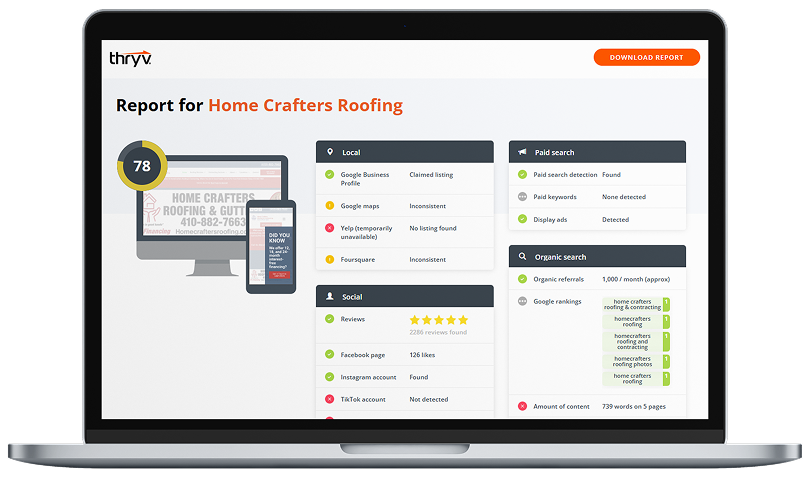One of the best parts about owning a business is getting paid. The worst part? Tracking down late payments and troubleshooting fraudulent transactions.
Understanding the difference between wire transfers and ACH payments can make your business more efficient and secure. Both are used to send money, but each has pros and cons that make it ideal for different situations.

We’re sharing our expert tips to help you boost productivity, eliminate time-wasting tasks, and more in this free guide.
Download Now
In this post, we’ll explain the differences between wire transfers and ACH payments and when to use them.
What is a wire transfer vs. ACH?
A wire transfer is an electronic payment made through a bank, while an ACH payment is an electronic payment completed through a clearinghouse (a network of many financial institutions). ACH payments are often used for direct deposits and bill payments, while wire transfers are used for fast, high-value transactions.
Let’s back up briefly and explain both of these in more detail.
What is a wire transfer?
Wire transfers move funds from one bank account to another. There’s no middleman, and the sender pays for the transaction. It’s digital, secure, and quick.
Western Union is a great example. Its service allows you to send money to people all over the world. You enter your bank and recipient’s details, and then a wire transfer is immediately sent from your account to theirs. Western Union charges a fee for this service, which is applied to the person initiating the transaction.
Wire transfers are used for:
- Transfers of large sums
- Large real estate deals
- Mergers and acquisitions between businesses
- International payments
- Same-day transactions
What is an ACH payment?
ACH stands for Automated Clearing House. It’s an electronic service that processes digital transactions, helping people and businesses move funds between bank accounts securely.
An ACH payment is any payment that uses an automated clearinghouse. It’s not as fast as wire transfers, but it’s typically cheaper and more secure.
ACH payments are used for:
- Payroll/direct deposits
- Government benefits or tax refunds
- Peer-to-peer payments
- Business-to-business payments
Now, let’s dive into the details. Below are the key differences between ACH payments and wire transfers.
ACH vs. Wire Transfer Difference
ACH payments and wire transfers are similar because they allow you to electronically move money between bank accounts. However, they differ in cost, speed, and reversibility. Below are a few key characteristics of each.
1. Wire transfers are faster than ACH payments.
Since wire transfers are direct, they typically take less time to complete than ACH payments. They’re usually processed within a business day and can take a few minutes in some cases.
ACH payments must pass through the clearinghouse, which takes time—like a few business days. Most payments are completed within one to three days, depending on when the transaction was initiated and the banks involved. If you want to speed up your ACH payments, you can submit transfers earlier in the day and plan around your bank’s cutoff time.
2. ACH payments are cheaper than wire transfers.
Wire transfers are faster than ACH payments but are also more expensive. Most banks charge outgoing fees, meaning the sender pays a fee to send funds to another account. These fees vary but typically cost between $15 and $50 per transaction. That’s why wire transfers are typically used for larger payments.
The graph below shows wire transfer fees for different providers. Note that some banks even charge incoming fees, meaning the recipient also pays a fee.
ACH payments are much cheaper; they typically cost less than a dollar per transaction. Again, it depends on the bank you use and the fees it charges. You can also pay a premium for speedier service for instant ACH payments.
3. Wire transfers are direct. ACH payments use a third party.
Part of the reason wire transfers are fast is that they’re direct. There’s no middleman like there is with ACH payments; transactions are one-to-one.
ACH payments must pass through the clearinghouse before they’re approved. The clearinghouse receives payments in batches or groups, sorts them, and routes each payment to the correct recipient. This takes time, but it’s more secure than a one-to-one payment.
4. Wire transfers are hard to reverse.
One of the biggest differences between wire transfers and ACH payments is that wire transfers are hard to reverse. Once a transfer is complete, the money is moved and belongs to the recipient. It is possible to reverse a transfer, but you must act quickly, and in most cases, you can only do it if the transfer wasn’t completed due to a technical error or an outage.
ACH payments are reversible. Banks can reverse a payment within a certain period of time. That said, there are rules (that we won’t get into here), but most banks only reverse a payment if fraud, insufficient funds, or other errors affect the transfer. Senders can request a reversal, but it’s up to the bank to fulfill it.
5. ACH payments only work domestically.
ACH payments are a domestic service. In the U.S., you can only use them to send money within the states (and a few partnering countries). That’s because they’re managed by the National Automated Clearing House Association (NACHA), which primarily focuses on domestic payments. You can use ACH for international payments, but it’s less common and requires a specific setup with your bank.
Wire transfers can be international. In fact, that’s one of the main reasons why people use them. You can send money to anyone anywhere in the world.
International ACH vs. Wire Transfer
ACH transfers are made through a clearing house. But what does that mean? The ACH network is a nationwide network of over 10,000 financial institutions in the U.S. These payments are processed on a fixed schedule. If you want to send money to someone internationally, you can do so through an international ACH payment or a wire transfer.
International ACH payments can be made if payments originate from U.S.-based institutions. If someone in another country wants to send you money, they must use a wire transfer.
Wire transfers are done through a different system than ACH payments, though the process looks similar. You’ll need the account and routing numbers for both accounts. The banks involved will have cutoff times for same-day wires.
6. ACH payments are typically more secure.
Wire transfers have a higher risk of fraud because they’re completed between two independent parties. Once a transfer is complete, it’s nearly impossible to reverse it. If you punch in the wrong number or get duped by a scammer, it’s hard to get your money back.
ACH payments are more secure because they pass through a trusted third party. Clearinghouses must abide by strict rules and regulations, which makes it easier to spot fraud and potential errors with each payment. They also have detailed transaction records, so you can dispute a payment if something goes wrong.
7. Wire transfers are one-off. ACH payments are usually recurring.
Since wire transfers have expensive fees and are used for large payments, most people reserve them for one-off transactions. ACH transfers are more affordable for recurring payments and can be automated for your business.
Direct deposits are a good example. They use ACH payments to deposit paychecks into bank accounts automatically. Employees don’t have to drive to their bank and manually deposit a paper check. The ACH process is speedier and much more secure.
8. The sender always initiates wire transfers.
Another difference between ACH and wire transfers is their starting point. Wire transfers are only initiated by the person sending money. ACH, on the other hand, can be triggered by both the recipient and the sender. You can request an ACH payment from the sender’s account, and the sender will have to approve it before the transaction is completed. This setup is more prevalent with bill paying, where customers authorize their bank to complete payments automatically.
Those are the main differences between ACH payments and wire transfers. Before we wrap up, let’s look at an example where you might have to choose between the two.
ACH Payment vs. Wire Transfer: Example
Let’s say your company has to send a customer an invoice for payment. Using payment software, you link them to a webpage where they can submit their payment. Once the customer enters their information, the software submits the file to the ACH and completes the transaction.
Many businesses use ACH transfers because they’re excellent for recurring transactions. If you have multiple recurring payments, your software will submit ACH transfer requests in batches to handle them all at once.
Best for Business: ACH or Wire Transfers?
ACH is the safest payment option unless you’re dealing with large sums of money. It’s easier to reverse and doesn’t incur large processing fees, though processing may take longer. Wire transfers are suitable for large transactions but are prevalent among fraudsters because they are almost irreversible. Keep these tips handy to make the right financial choices for your business, and check out this payment savings calculator to see how much you can save on future transactions.






